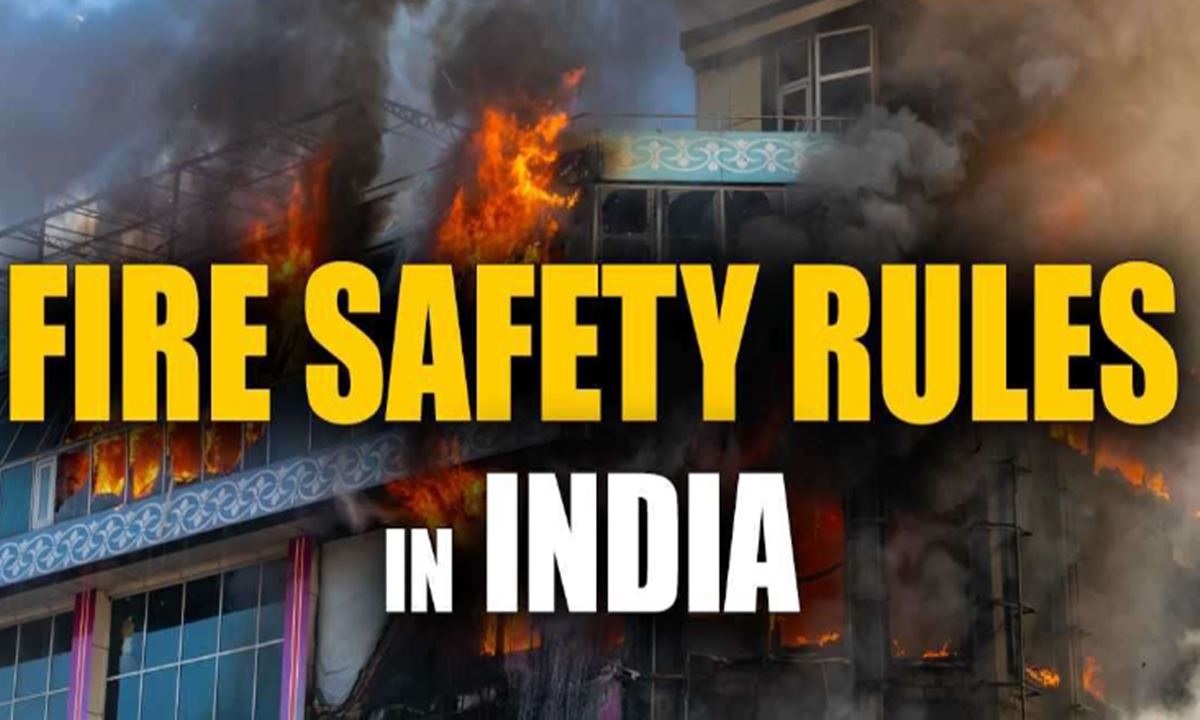Recent devastating fire incidents at a gaming zone in Rajkot, Gujarat, and a children's hospital in Delhi, claiming over 30 lives, underscore the critical importance of adhering to fire safety regulations in India. These tragedies have amplified the call for rigorous enforcement of safety measures, particularly in structures vulnerable to man-made disasters.

Recent devastating fire incidents at a gaming zone in Rajkot, Gujarat, and a children’s hospital in Delhi, claiming over 30 lives, underscore the critical importance of adhering to fire safety regulations in India. These tragedies have amplified the call for rigorous enforcement of safety measures, particularly in structures vulnerable to man-made disasters. As communities mourn the loss of precious lives, there is a pressing need for comprehensive measures to prevent such calamities in the future.
Fire Safety Regulations in India
In India, fire services fall under the jurisdiction of state governments and are classified as a Municipal function under the XII Schedule of the Constitution of India, as outlined in Article 243 (W). This means state governments are responsible for fire prevention and ensuring the safety of lives and properties. They achieve this mandate through mechanisms such as the State Fire Services Act or building bylaws.
The National Building Code of India 2016 (Fire and Life Safety), published by the Bureau of Indian Standards (BIS), serves as a comprehensive guideline for the construction, maintenance, and fire safety of structures. Initially published in 1970 and last updated in 2016, the NBC is considered the central standard for fire safety in the country. It provides detailed guidelines for general construction requirements, maintenance, and fire safety of buildings, serving as a model for adoption by all agencies involved in building construction.
Additionally, the ‘Model Building Bye Laws 2016’, issued by the Ministry of Housing and Urban Affairs, assist states and union territories in framing their respective building bylaws. These bylaws prescribe norms for fire protection and safety requirements.
Fire Safety Codes and Measures
According to the National Building Code, achieving absolute fire safety may not be feasible in practice, but certain measures can enhance safety from fire hazards. The Code specifies zones for construction and imposes restrictions based on fire zones to prevent the coexistence of industrial and hazardous structures with residential, institutional, and commercial buildings.
These measures apply to various types of buildings, including high-rise structures, hotels, educational institutions, commercial establishments, storage facilities, and industrial units. Specifically, the regulations apply to buildings with a floor area exceeding 500 square meters on any floor, assembly buildings, structures with incidental assembly occupancy exceeding 300 square meters on any floor, and buildings with two or more basements, or one basement exceeding 500 square meters in area.
As per the code, non-combustible materials should be used for the construction of buildings, and the internal walls of staircase enclosures should be of brickwork or reinforced concrete with a minimum of 120 minutes fire rating. For electrical installations, it is desirable that the wiring and cabling are flame retardant. Medium and low voltage wiring running in shafts and within false ceilings shall run in metal conduit. The electric distribution cables/wiring shall be laid in a separate shaft, sealed on every floor with fire-stop materials having the same fire resistance as that of the floor. All metallic items such as steel structural members should be bonded properly to the earthing system.
Challenges in Compliance
The absence of a unified fire service in various Indian states, combined with a disregard for safety regulations, significantly contributes to frequent fire incidents. The lack of standardization and enforcement of safety norms leads to disasters, exacerbated by deficiencies in organizational structure, training, and resources for firefighters. Limited modern equipment and inadequate funding further hinder firefighting efforts, while ambiguous fire safety audit provisions and lax rules increase the risks.
Non-compliance with fire safety measures is a pervasive issue. For instance, the fire at the gaming zone in Rajkot, where norms were flouted and combustible materials were used, resulted in a devastating blaze. Many buildings nationwide neglect fire safety regulations, compromising exit routes and increasing the potential for casualties during emergencies.
Common Causes and Preventive Measures
Common causes of fires include short-circuits, often due to overheating electrical appliances during high temperatures in summer, and overloading of electrical systems. Proper maintenance of electrical equipment is essential to prevent overheating and potential hazards. Regular servicing of electronic appliances helps prevent sparks and fires. For public business places, implementing fire safety measures, installing necessary firefighting equipment, and providing personnel with adequate training are crucial steps.
Survey on Compliance
According to a survey, only 18% of people reported living in houses or apartments compliant with fire safety norms, where checks are conducted annually. The survey, which collected responses from more than 22,000 citizens across 301 districts of India, revealed widespread neglect and uncertainty regarding fire safety measures.
19% were unsure if their fire extinguishing systems worked.
27% admitted to never ensuring compliance.
3% had a fire extinguisher but lacked other safety measures.
21% had not considered fire safety.
12% didn’t provide a clear response.
Regarding workplaces, out of over 11,000 respondents, only 27% confirmed that their office, factory, or shop complied with fire safety standards and underwent regular annual checks. The majority of respondents expressed uncertainty or neglect regarding fire safety measures:
14% were unsure if their fire extinguishing systems worked.
14% admitted to never ensuring compliance.
20% had not considered fire safety.
14% didn’t provide a clear response.
The survey highlighted that fire safety compliance is notably lacking in both residential and workplace settings.
Conclusion
The recent fire tragedies in Rajkot and Delhi serve as a grim reminder of the urgent need for stringent enforcement of fire safety regulations. While India has comprehensive guidelines in place, the challenges lie in ensuring compliance and standardization across the country. Addressing these issues is crucial to prevent future disasters and protect lives and properties.

